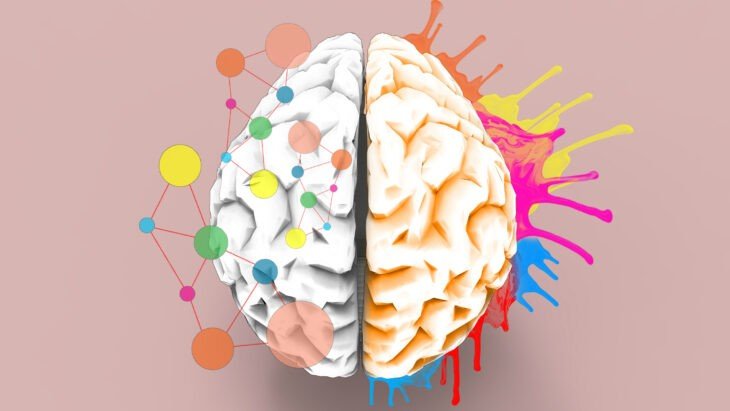




Designing for Invisible Disabilities: Making the Unseen, Seen
In a world where disabilities are not always immediately apparent, designing with inclusivity in mind becomes even more complex. Invisible disabilities, such as chronic pain, cognitive impairments, mental health conditions, and sensory sensitivities, can significantly impact an individual's daily life. This article aims to shed light on the challenges faced by those with invisible disabilities and how design can play a pivotal role in creating a more inclusive and accommodating world.


How Accessible are these 2023 UI Design Trends?
If you’re a designer looking to stay up to date on the design trends of 2023, then you’ve come to the right place. The technology world is constantly changing and evolving and as a designer, it can be hard to keep up with all the latest trends. Upon perusing this article on the 2023 visual design trends guide, I set out to immediately assess the usability of each trending style.

Can Disability Inclusion & A11y Thrive in a Sea of Tech Layoffs?
In the past few years, tech companies have been making progress in their efforts to create inclusive products and services for users of all abilities. But this progress has recently been threatened by a wave of layoffs in the tech sector that have significantly impacted accessibility teams and inclusive design initiatives. In this post, I will explore the good, the bad, and the ugly in big tech and what I think this means for the future of digital accessibility.

Vestibular VR: 5 Features to include in your Metaverse to make it more accessible
Here are five key ways your team can keep including those with disabilities front-of-mind for improved games & Metaverses ahead!

5 Reasons neurodiverse brains are excellent for creative roles.
Often when covering the topic of disability inclusion and careers I dig into the limitations that might require some accommodation or consideration. However today I'd like to take a different approach to this conversation, let's focus on the strengths & potential!
Here are some of the reasons I think people with neurodiverse brains make exceptional creative leaders and designers.

Designing outside the box
When I became disabled from Ramsay Hunt Syndrome it pushed me over the edge physically from being able to spend 8-10 hrs a day, 5+ days a week with my face buried in Figma, Adobe CS, Canva, Squarespace, Wordpress, Instagram, TikTok and more. I could no longer handle the intensity required of a designer, especially when there are days and weeks when my vision is more impaired, my hearing is on the fritz and my vestibular system is just causing all types of system failures. Systems I rely on as a designer.

When a sudden disability impacts your career path
Careers are often windy roads. My job path wasn't direct or typical in any way, that had equal parts pros and cons. What happened when I thought I had set on a clear path and life + sudden disability hit?

Will Web3, The Metaverse & AR/VR ever be accessible for me?
I will openly say that at the time I was working in innovation I was not paying much attention to accessibility. I mention this because I do notice how little my network (outside of the a11y space) touches on the accessibility topic. I'm not here to "yell at you", I'm here to ask you questions and perhaps get you thinking about this now. Let's get those gears turning and consider how to create a more inclusive Web 3.0, Metaverse and AR/VR World.

Struggles navigating the modern workplace when you aren't neurotypical
I never felt like I fit in, except when I started my own company and created a workplace environment that made sense to me.
I always felt it was a struggle to integrate into existing ecosystems, especially when there was little onboarding and documentation on "how things worked". Figuring out how to navigate social and office politics seemed like an impossible task.

Top 3 Don'ts - When your coworker has Vestibular Dysfunction
I'm writing this because I'm not particularly special or unique. Did you know that one large epidemiological study estimates that as many as 35% adults aged 40 years or older in the United States—approximately 69 million Americans—have experienced some form of vestibular dysfunction?

5 everyday things they never told would change with Vestibular Dysfunction
Living with vestibular dysfunction is rollercoaster... literally and figuratively.
I have a permanent vestibular issue as a result of Ramsay Hunt Syndrome, which left me with 89% dysfunction in my effected side. Overall my recovery and ability to adapt has been really fantastic. If I didn't mention the issue the average person wouldn't notice it, only those that have known me for a long time can easily spot the differences.

Not all hearing disabilities are hard of hearing or deafness.
It's been over one year since I was diagnosed with Ramsay Hunt Syndrome, a rare neurological condition recently getting a lot of attention in the press due to Justin Bieber announcing his diagnosis with the condition.

Designing Dizzy: Digital Displays & Neurological Disorders
Have you ever experienced a VR rollercoaster? Perhaps you have ridden the One World Trade Center elevator to the observatory? Have you visited Spyscape in NYC and rode their elevator "experience"?

Designing Dizzy: Seeing the world through an accessible design lens
A few months ago I posted about my sudden facial paralysis, hearing, vision, taste and balance loss. I am Dana and I am a Ramsay Hunt Warrior!